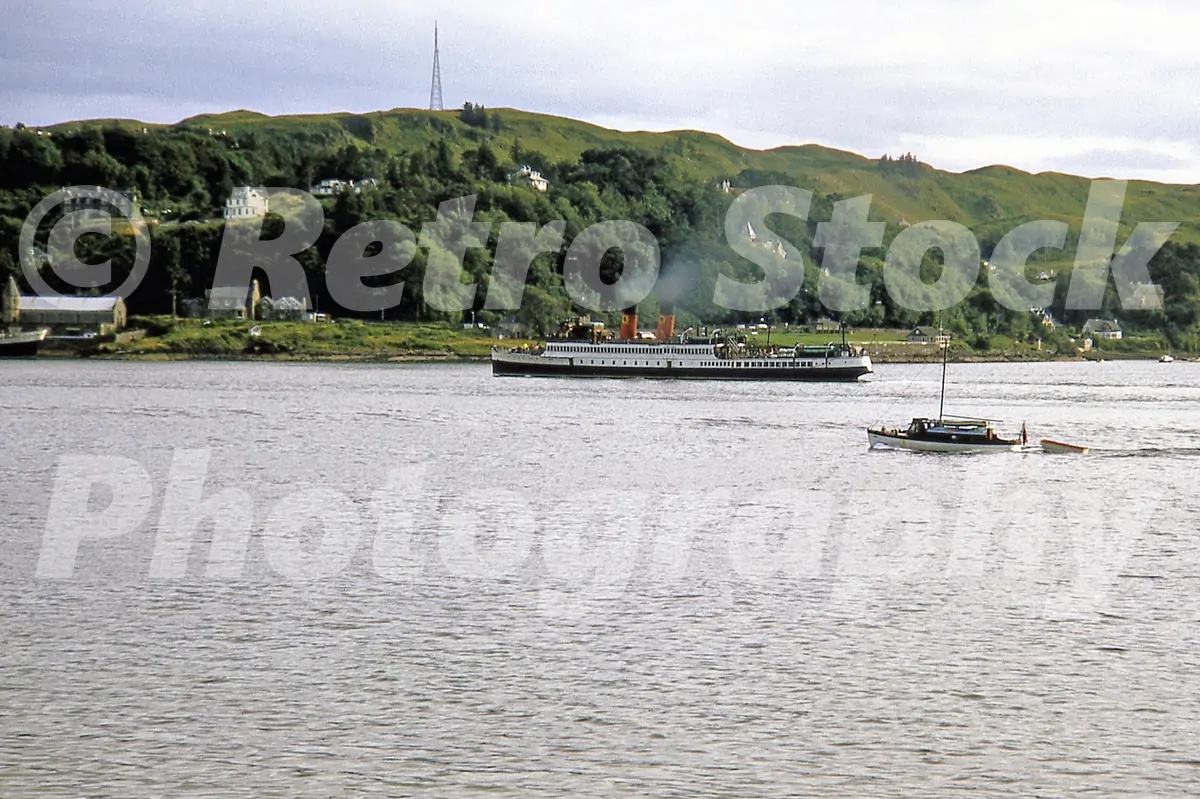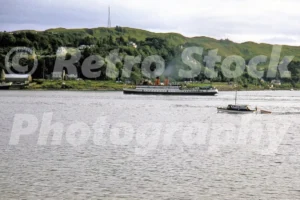The TS King George V was one of the most iconic paddle steamers to grace the waters of the River Clyde and the west coast of Scotland. Launched in 1926, she combined elegance, engineering innovation, and long service to become a beloved part of Scotland’s maritime and tourism heritage.
Built for Royal Service
Commissioned by the Turbine Steamers Ltd, a company formed by David MacBrayne Ltd and the London and North Eastern Railway (LNER), the King George V—often shortened to KGV—was built by the reputable William Denny and Brothers of Dumbarton. She was designed as a turbine steamer (hence “TS”) rather than a traditional paddle steamer and was one of the earliest ships to use geared turbines, allowing more efficient fuel use and improved speed control.
Launched in April 1926 and entering service in the summer season, the King George V was intended for long-distance excursion work from Glasgow down the Clyde and out to the islands, especially to destinations like Campbeltown, Inveraray, and the Isle of Arran. She quickly earned a reputation for her speed, comfort, and smooth handling in all weathers—making her one of the most reliable excursion vessels in the region.
Wartime Service
Like many civilian vessels, the King George V was requisitioned during World War II for military service. Converted into a troop transport and subsequently a minesweeper and anti-aircraft vessel, she played a role in the defence of British coastal waters and the movement of personnel. Following the war, she was returned to civilian service and underwent a major refit to restore her for peacetime operations.
A Floating Palace of the Clyde
In the post-war years, KGV resumed her role as a day excursion steamer and became a popular sight once again on the Firth of Clyde. With her graceful profile, open promenade decks, and stylish saloons, she was often described as a “floating palace.” She offered day trippers from Glasgow and surrounding towns the chance to explore the scenic coasts and islands of western Scotland in great comfort.
She was also notable for her adaptability. While most Clyde steamers were designed for relatively short crossings, the King George V could handle longer and more exposed routes, even venturing to the Western Isles on chartered sailings. Her advanced turbine engines made her both powerful and efficient—well ahead of her time.
Final Years and Retirement
By the 1960s, however, the golden age of Clyde steamers was in decline. Increased car ownership, changes in holiday habits, and competition from road and rail reduced the demand for day-trip cruises. The King George V, despite her popularity, became increasingly expensive to operate. After over 40 years of service, she was withdrawn from the fleet in 1974.
Plans to preserve the vessel as a museum ship were discussed but never realised. Eventually, she was broken up in 1984 at Troon, bringing to an end the career of one of the most admired vessels in Scottish maritime history.







Reviews
There are no reviews yet.